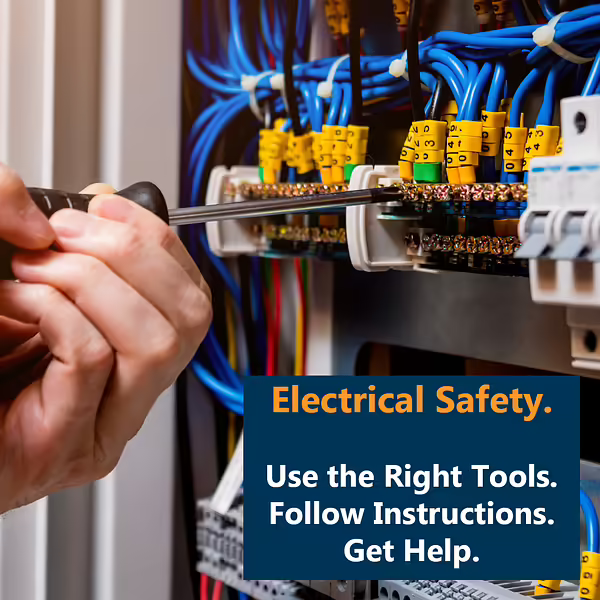
It is always best practice to hire a certified electrician to work on your electrical projects but if you are in an emergency or not able to hire an electrician, make sure you follow all local electrical codes.
There are many reasons you might need to do electrical work in your own home. Maybe you’re installing a new ceiling fan to help with the summer heat. Maybe you want extra outlets in your home office.
Whatever the motivation for working with electricity is, it means you’re dealing with potentially dangerous voltage, and safety is paramount. An accident or mistake could create significant injury. So, take a minute to review the best safety practices, and you can proceed knowing that you’re doing things the right way.
Which Electrical Box?
There are actually many electrical boxes in your home. The main circuit breaker might be the first that comes to mind, but every outlet, switch, ceiling light, ceiling fan, and more has an electrical box. For those with older homes, fixtures and ceiling fans may not have an electrical box to start, so it is good practice and code compliant to add one.
Considering that, the safety tips will make a little more sense broken into two parts. We’ll talk about the breaker box first. Then, we can discuss safety with other electrical boxes in your home.
Breaker Box Safety Tips
If you’re working with the main breaker box, a few safety tips can keep you out of trouble:
- Label everything.
- Protect the box from weather (this is important for boxes that happen to be outdoors).
- Protect the box from water.
- Leave any changes to the professionals.
Let’s talk about that last tip a little more. If you need to add circuits to the box, change the load on any switches, or otherwise make changes to your circuit breaker box, hire a professional. It’s the law, and it’s also extremely important for safety.
Other Box Safety Tips
When you’re dealing with junction boxes and any of the smaller boxes in your home, safety is still important, but the most important tips will be a little different from what you just read.
Turn off the Power
This is the most important thing. You labeled your breaker box so you can turn off the power to any part of the house when you need to. If you’re messing with an electrical box, turn off the power at the breaker. Then, test that the power is definitely off before you do anything with the box.
Use the Right Tools
Using the right tools is very important. You might think that because the power is off at the breaker, you can use any old tools. Redundant safety goes a long way. So, use tools with insulated handles. Use the appropriate safety gear.
Also, use tools that are the right size and shape for your electrical work. If you mangle wires or have to dig out drywall to get the job done, that can create safety hazards when you’re done.
Follow Instructions
Make sure that anything you’re adding to a circuit is rated for that circuit. If you put too much draw on one part, it can flip the breaker. It can also create fire hazards, and no one wants that for their home.
Also, electrical devices tend to come with installation instructions. Follow those instructions so you don’t cross wires and create electrical flow problems that can create many different dangers you don’t need in your life.
Get Help
Most of all, get help when you need it. If you’re ever unsure as to how to do a job involving electrical work, ask for help or hire a professional. Electricity always represents the dangers of shock, electrocution, and fire. Don’t take them lightly.
Looking to stay up-to-date on the latest articles and product releases? Don’t miss out – sign up below and be the first to know!
